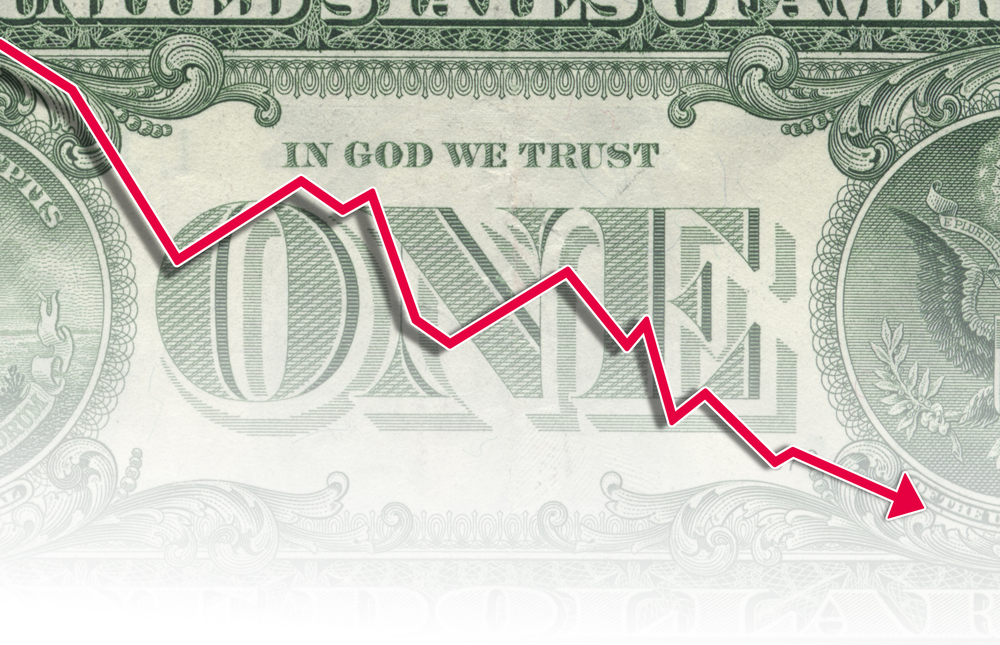The Dollar Slips on Fundamental Developments

Please note that we are not authorised to provide any investment advice. The content on this page is for information purposes only.
Today, there have been several fundamental developments encouraging the dollar’s slippage. Japan reported its first trade monthly trade surplus in nearly three years; further easing of rate cut expectations by Australia; BOE minutes warning of a faster pass through of a sterling’s depreciation on inflation; and the German government revised its 2015 GDP to 1.8% from 1.5%.
Today, there have been several fundamental developments encouraging the dollar’s slippage. Japan reported its first trade monthly trade surplus in nearly three years; further easing of rate cut expectations by Australia; BOE minutes warning of a faster pass through of a sterling’s depreciation on inflation; and the German government revised its 2015 GDP to 1.8% from 1.5%.
Japan reported a JPY229 bln trade surplus. There was anticipation of a surplus, but this is roughly five times larger than expected. It was a function of an 8.5% increase in exports (year-over-year), the eighth consecutive increase, and a petroleum-led decline in imports of 14.6%.
Many observers will cite the weakness of the yen, but there are other moving parts that need consideration. First, the lunar New Year distorted the February data. Second, the story is not only about price but also relative demand. Regional figures illustrate both of these points. Japan’s exports to Asia, which account for slightly more than half Japan’s exports, rose 6.7% (year-over-year) after falling by 1.1% in February. Exports to China rose 3.9%, after falling 17.8%. Exports to the US, Japan’s largest trading partner (again) increased 21.3%, accelerating from 14.5 in February.
Australia’s Q1 CPI was reported in line with expectations, but a slightly faster increase in the trimmed mean and weighted median measures sent the Australian dollar above $0.7800 (after having slipped to $0.7685 yesterday). It has flirted with this area over the past several sessions but has been unable to get a convincing foothold. The headline CPI rose 0.2% to a 1.3% year-over-year pace (down from 1.7%). The trimmed mean ticked up to 2.3% from 2.2% and the weighted median was unchanged at 2.4% (Q4 was initially reported at 2.3%).
The market has been gradually downgrading the likelihood of an RBA rate cut next month. It is now approaching 50% from near 80% earlier this month. Moreover, the market is also scaling back the number of rate cuts. It had nearly fully priced in two cuts, and now it is only about a 40% chance of a second cut.
Sterling has powered through the $1.50 area. It has already been recovering off yesterday’s push to almost $1.4850. The BOE minutes provided the additional kick. The two key points, outside that the vote was 9-0 as expected, was that a couple members thought that the decision (to keep rates steady) was close and that there was some concern about the speed at which sterling’s decline will feed through to inflation. Taken together the sounded somewhat less dovish. Sterling’s gain of nearly a cent on the news seems out of proportion with the 2 bp increase in the implied yields of the short-sterling futures for December 2015 and June 2016. That said the risk is that short-term UK rates rise in the period ahead.
Sterling testing last week’s high near $1.5050. This is only the second time it has been above $1.50 since March FOMC meeting. On that day, it hit $1.5165. A revisit to there seems a bridge too far. Intra-day technicals are stretched and the prospects of a hung parliament/minority government will encourage sellers.
The German government revised up its growth forecast to 1.8% its January forecast of 1.5%. It a not very thinly veiled response to some of its critics, it noted that growth would be led by private demand (2% in 2015 after 1.2% in 2014) and projects slower growth in exports (4.7% in 2015 and 4.5% in 2016). It also does not anticipate a prolonged period of deflation. It sees 0.5% CPI this year and 1.4% in 2016.
The euro has advanced to $1.08 from $1.0660 yesterday. Last week’s high was set near $1.0850. The ongoing Greek drama weighs on sentiment. Although there has been some progress, it still is doubtful that a deal will come on April 24. Meanwhile, three-month Euribor, a key benchmark, has turned negative this week, and the implications need digesting. European bonds, including Greece, are rallying today, with spreads over Germany narrowing. The heavier equity markets and the $3 drop in the price of Brent oil since Monday are supportive.
Dollar Surrenders Gains is republished with permission from Marc to Market




